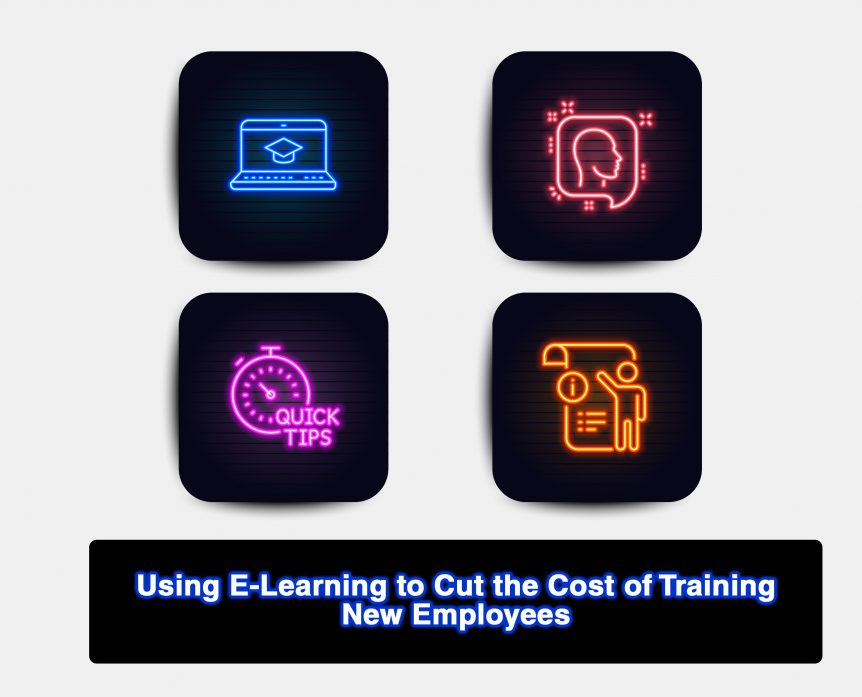Using E-Learning to Cut the Cost of Training New Employees
Training new employees is getting expensive. This is the reality of business whether you are based in Dubai or anywhere else in the world.
Just look at how much more compliance training your company delivers now than it used to. When a new employee joins your organisation, they need that compliance training too. This is in addition to training on company systems, standards, products, services, and procedures.
It’s understandable, therefore, that companies look to reduce the cost of training new employees.
What is the Cost of Training New Recruits?
As part of this process, it’s important to understand the costs involved in training new employees. Some of these costs are obvious, but there are hidden costs you need to be aware of too. The costs involved include:
- Trainer time, particularly if the trainer is a manager or supervisor who has other responsibilities. While training is important, is training a new employee really the best use of the manager’s time, especially when you consider there are other options available?
- The administration involved in training new employees is a cost you should be aware of too. In particular, the administrative burden of staying on top of the training that each new employee has received.
- The new employee will also be less productive while they are engaged in training, which is also a cost to your business.
- There might be transport and accommodation costs involved if either the new employee or the trainer has to travel to a different location.
Skimping on Training for New Employees is a False Economy
Some organisations look to reduce the training they give to new employees as a way of cutting costs. This is a false economy, however, as it often results in lower levels of productivity from the new employee. After all, without appropriate training, it will take employees longer to get up to speed.
They could make more mistakes too, which can also be costly.
In addition, there is an increased risk the employee will feel unsure or under pressure because they don’t have the knowledge they need, i.e. the knowledge they would have if they had been given the appropriate level of training in the first place.
This leads to unhappiness and workplace dissatisfaction, both of which can negatively impact your business in a variety of ways. This includes customer service standards and wider staff morale.
The worst outcome, however, is where the new employee leaves the business after a short period of time. This is particularly problematic, especially in relation to training, if the employee leaves because they feel they didn’t get enough support.
Using E-Learning to Cut New Employee Training Costs
So, we’ve established that you shouldn’t cut corners when it comes to training new employees, even though it is expensive.
In addition, not only do you need to give them all the training they need, but the training must be high-quality to ensure you get a good return on investment.
That said, you can still cut the cost of your new employee training programme by integrating e-learning into your strategy.
By using e-learning, you can deliver consistent, high-quality, and timely training to new employees at a fraction of the cost of delivering the same training manually in a classroom-type environment.
This is because you develop a training module once that can then be completed by multiple employees – hundreds if necessary – in multiple locations over many months and years. There is no need for travel, employees get the knowledge and skills they require, and there is a reduced need for the involvement of instructors.
4 Tips for Maximising the Impact of E-Learning on Your New Employee Training Strategy
Tip 1: Create a Library of Onboarding Training Modules
You should have a library of training modules you can give to new employees when they start. Not only do they get the knowledge and information they need from the beginning, but the library will also give them a resource they can refer back to whenever they need it.
It’s best if you customise these modules to ensure they are relevant to employees regardless of location or role. You can do this at low cost by creating the module’s core content and then having customised sections.
Tip 2: Give Learners Autonomy
Where possible, don’t make the requirements for completing new employee training too rigid. Instead, give your new recruits some autonomy over when and where they go through the modules.
You will need to set boundaries and expectations, and you will probably need to make sure learners can complete the training on a mobile device. However, giving learners autonomy empowers them and improves outcomes.
Tip 3: Establish Mentorship Programmes
One concern that some people can feel when asked to complete an e-learning training module is they will not get one-to-one support. You can deal with this concern by creating mentors that new employees can go to when they need clarification or further information.
Mentors also offer other benefits to your business, including giving new employees greater support more generally.
Tip 4: Complement E-Learning with Some Face-to-Face and/or Instructor-Led Training
Finally, just because you include e-learning in your new employee training strategy doesn’t mean you have to use it exclusively. In fact, the best approach is often to complement e-learning with elements of instructor-led training. This can be either face-to-face or in a classroom.
By implementing e-learning into your new employee training strategy, and by following the tips above, you will increase the quality of training you provide while also reducing your costs.
